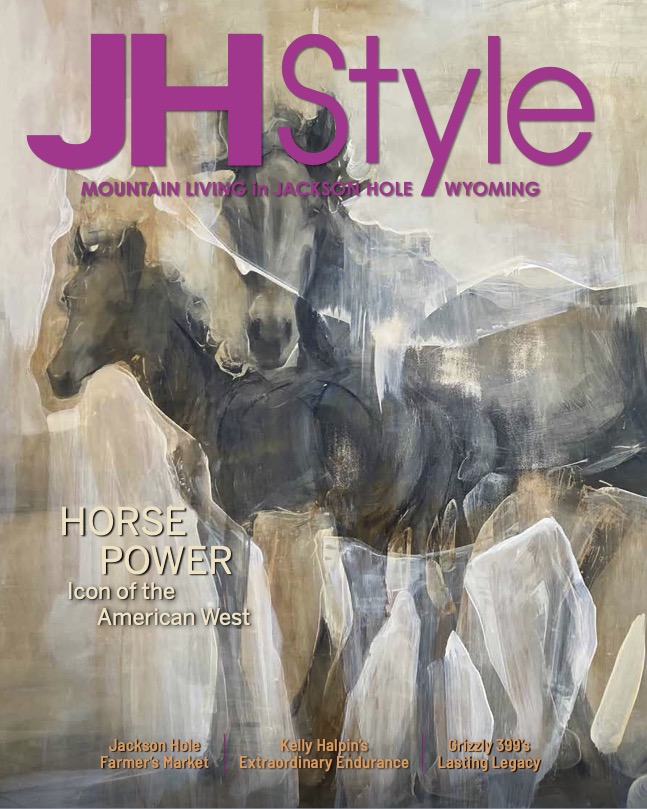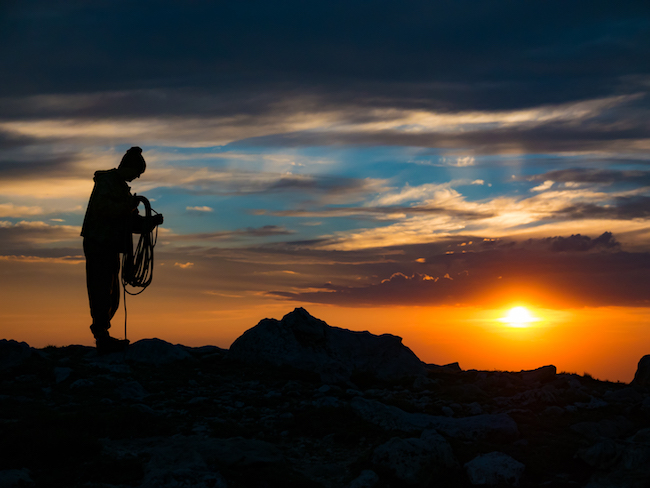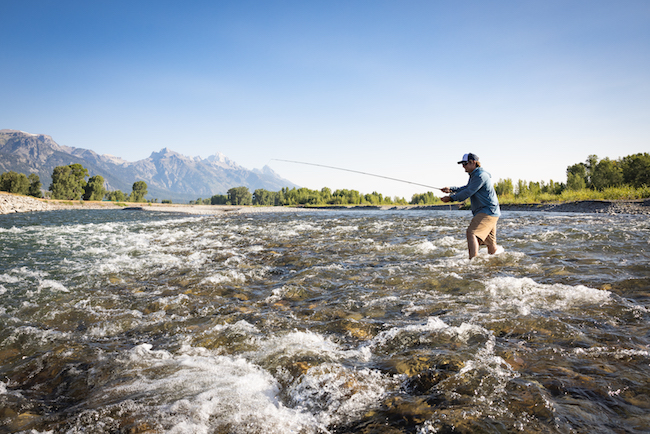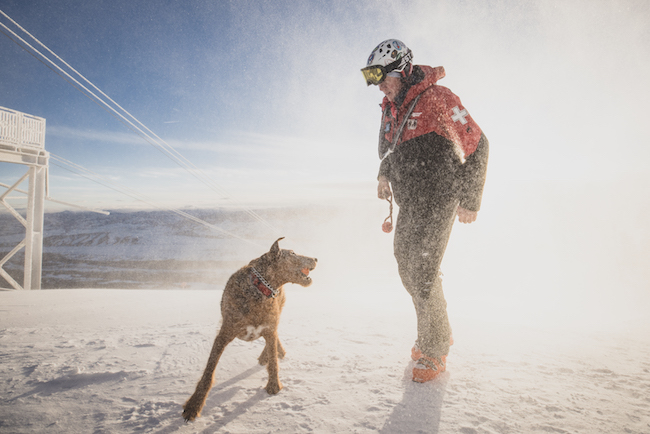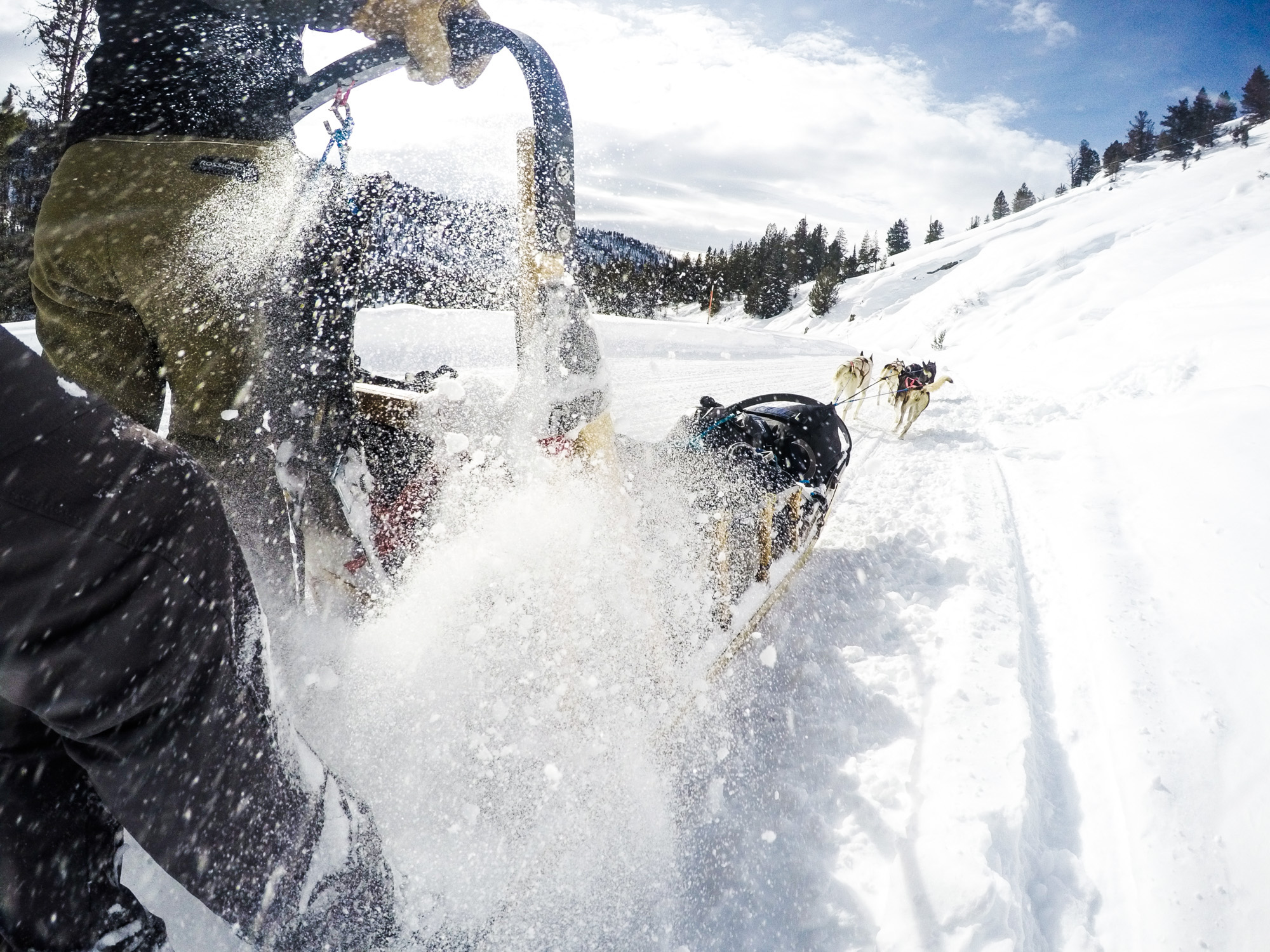Cast Your Fly Where the River Runs
14 Jul 2019
Fishing Tips from a Local Expert
Summer 2019
Written By: Peter Long | Images: Courtesy Scott Smith and Josh Gallivan
EACH YEAR LIKE CLOCKWORK A REMARKABLE TRANSFORMATION OVERCOMES JACKSON HOLE. AS BRISK SPRING DAYS GIVE WAY TO THE STIRRINGS OF SUMMER, THE LAST SNOWY VESTIGES OF WINTER GRADUALLY DISAPPEAR. AS THOUGH RELEASING THEIR GRIP, THE VALLEY’S SNOWFIELDS SLOWLY RECEDE, BREATHING FRESH LIFE INTO THE SURROUNDING RIVERS AND LAKES.
This perennial scene whispers something of a siren song to adventurers near and far. And perhaps to none does it call more acutely than to those with a rod, reel, and an itch to see a fish rise.
The iconic Snake River, which traces its path along the foot of the Tetons, has become a destination for anglers from around the world. But follow nearly any dirt road around here long enough, and one will discover a tract of creek or secluded lake glinting with pastel-gilled cutthroat, silvery rainbow trout, or any number of other species.
“You could point someone to nearly any drainage in Jackson Hole, and it’s a safe bet they will be casting a fly in trout water,” says Scott Smith, owner of Grand Teton Fly Fishing. “We are fortunate to have some of the best and most diverse dry fly-fishing in the country.”
From the seasoned river guide to the first-time angler, a great experience starts with the fundamentals, according to Smith. Master the basics, and the odds of a bite tip in one’s favor. Here are some of Smith’s tips for fly-fishing in the Jackson Hole area.


The catch is in the cast: Begin with the rod low and parallel to the water, with about two rod-lengths of line slacked out. Accelerate the rod backwards, stopping at the 1 o’clock position. Hesitate until the line is fully extended back. Reverse momentum forward, as though throwing a dart, pointing the tip toward your target. Stop the tip at eye level and allow the line and fly to carry out over the water. Avoid false casting—flying your line over the water repeatedly—which can scare away a catch.
Read the waters: Once a fly is landed on the surface, your line should flow perpendicular to it. If the line is pulled ahead or behind by faster-moving current, it creates drag that disrupts the presentation—a dead tip-off to the fish below. Keep your line tight by stripping (pulling in extra line) to get the most float out of each cast.
Equip your fly box: It’s important your fly selection matches what’s on, and in, the water. Caddis, mayfly, and stonefly imitations do well through early July. By mid-summer, ants, beetles, and attractor flies mix in well. During August and September, hoppers and large terrestrials are a good bet. With the cooler fall weather smaller flies once again take the stage.
Leave it better than you found it: Anglers share a responsibility to help conserve the integrity of Jackson Hole’s waters. Clean, drain, and dry watercraft and waders to prevent invasive species. De-barb flies and handle fish minimally and close to the water. And, of course, whatever you pack in, pack out.



